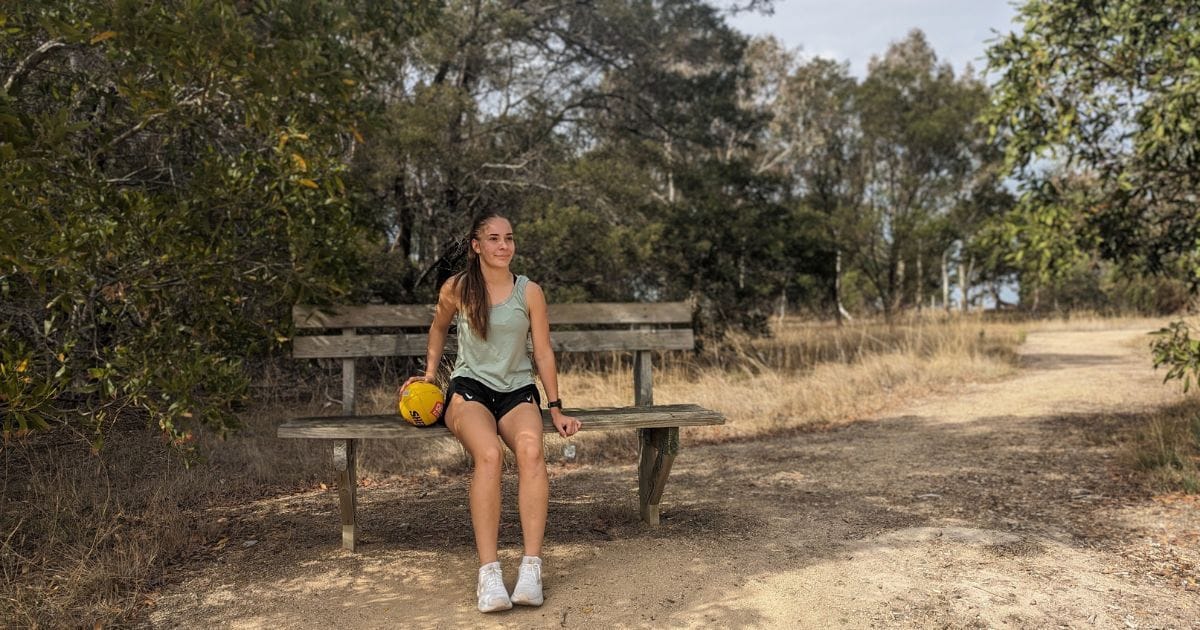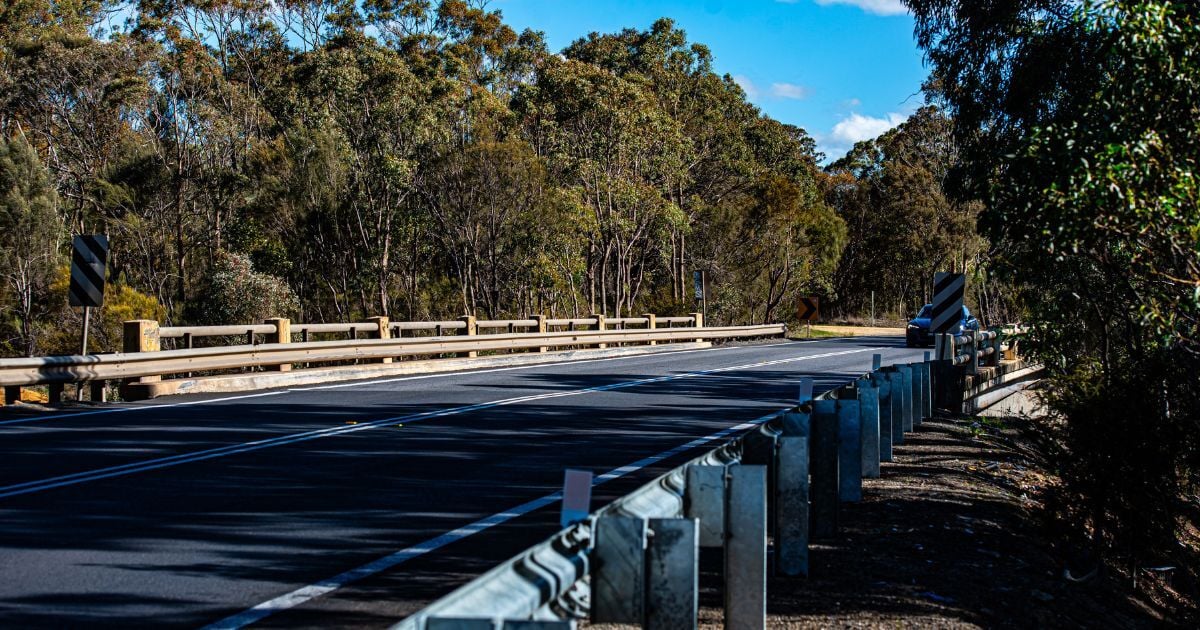Australia's youth might be ditching alcohol, but regional services need to catch up
There’s been a downward trend in binge drinking among young people, but social isolation and limited resources risk leaving some people in West Vic behind.

Ballarat’s Elsie Day has her sights set on the big game.
The 17-year-old is hoping to either play for the AFLW or work as a sonographer for an AFL club.
“I train about three hours, two times a week and have gym the other three days,” the year 12 Phoenix P-12 Community College student and school captain says.
Her fitness regime includes keeping her body healthy so she’s on top of her game. She doesn't go to many parties, tries to have early nights, and "very rarely" drinks alcohol.
“If I drink, it’ll be one or two on a special occasion," Day says. “It’s about keeping your body the best you can be, and your brain assertive and healthy. I’m not interested in it.”
Day is one of the teens the Brolga spoke to who is choosing to drink moderately – or not at all. She says while there continues to be a culture of drinking among her peers, she has never felt pressured to join in and she doesn't feel she’s missing out.
“With my close friends, there’s not as big an emphasis on having to drink to have fun.”
Another Ballarat student, who didn’t wish to be named, said she had noticed more people choosing not to drink as more information about the risks of alcohol became available.
“It’s becoming more normalised to say no to alcohol without feeling judged,” she said.
“There are people who don’t enjoy the feeling of being drunk or ‘out of control’ and don’t see the point in drinking when they can have fun without it.”
Data from the National Drug Strategy Household Survey shows that alcohol consumption for 14 to 17 year-olds dropped from 69 percent in 2001 to 31 percent in 2022. Age of initiation into alcohol also increased from 14.7 years in 2001 to 16.1 years in 2022 and rates of abstention for 14-17 year-olds increased from 39 percent to 70 percent from 2007 to 2022.
Fewer young people aged 14 to 17 drank alcohol at risky levels in 2022–2023 (5.5 percent), down from 9.5 percent in 2019 and about 25 percent in 2007. Risky drinking is defined as having more than 10 standard drinks per week on average in the previous 12 months or having more than four standard drinks in a single day at least once a month over the previous 12 months.
La Trobe University senior research fellow and the deputy director of the Centre for Alcohol Policy Research, Amy Pennay, who conducted research exploring trends in adolescent drinking across 39 high-income countries, says not drinking is now the majority behaviour for young people in Australia and has been for some time.
She says fundamental changes have occurred in the way young people are moving through late adolescence as a distinctly unique generation.
“They are more cautious and risk averse, they are worried about their futures and economic security, they are more disciplined and surveilled by parents and on social media, they are more health conscious, they are anxious and mental health problems are increasing for young people. They also think alcohol is not that cool and something their parents do or did,” Dr Pennay says.
The trend is a global one, she says, at least in high-income countries. “Meaning that what is going on is bigger than policies or culturally specific changes in norms.”
Phoenix P-12 Community College sports coordinator and AFL Academy of Sport coach, Andrew Hooper, says there were many reasons students chose not to drink alcohol or drink in moderation.
“Some want to be the best athletes they can be and understand how alcohol can negatively impact their performance,” he says. “Others are motivated by mental health concerns, family influences, or a focus on personal health and well-being.”
A former AFL player, Hooper says the message around alcohol and responsible choices started at home.
“It’s important that young people are encouraged to think about whether drinking is something they really want to engage in at an early age.”
Regional areas at higher risk
Data from the Australian Institute of Health and Welfare has shown people living in remote and regional areas are 1.4 times more likely to put their health at risk from drinking alcohol than those in major cities.
Recent data also found alcohol was the main drug of concern for people seeking treatment in 2023-24, accounting for two in five (42 percent) of the 219,277 episodes of treatment – compared to amphetamines (26 percent), cannabis (16 percent) and heroin (4 percent).
The Banyans Healthcare is a rehabilitation facility in Queensland that provides support for people facing mental health and addiction. Its founder, Ruth Limkin, says while there has been a change in youth culture and public health efforts contributing to a decline in risky behaviours, they still noticed a 43 percent increase in enquiries presenting for alcohol addiction year on year, with regional Australians most at risk.
Psychologist, Shannon Webb, who works at Banyans, says risky drinking behaviour among young people in regional areas was often driven by perceptions it was socially acceptable, with factors like geographic isolation, socio-economic disadvantage, limited access to education, and reduced availability of health services also contributing.
“Unfortunately, the isolation of regional towns also means young people face more barriers when seeking addiction support, due to lack of alcohol treatment services and long travel times to those available,” she says.
“Anonymous recovery groups are typically the first place for support, but these are rare due to the lack of anonymity in close-knit country towns.”
Webb says parents played a key role in shaping young people’s attitudes towards alcohol. Increasing access to extracurricular activities such as sports, arts, and youth programs, she says, is crucial in rural areas when it comes to reducing the risk of alcohol use.
Foundation for Alcohol Research and Education (FARE) director of policy and research, Dr Catherine Earl, said in a statement governments needed to put safeguards in place that are adequate for the digital age.
“There are common sense measures that can make a real difference now, like changes to the Privacy Act, ensuring people’s data isn’t collected to market addictive products to those already struggling with alcohol.”
“We need the federal and state governments to implement the common sense protections that will put the health and wellbeing of families and communities ahead of the interests of the alcohol industry.”
As Day trains for the end of year draft pool, she’s grateful to have a group of friends who respect her and her choices.
“If people don’t know you at a party, they might ask questions, but once you answer they’ll respect you and leave you alone. It’s pretty respectful.”
